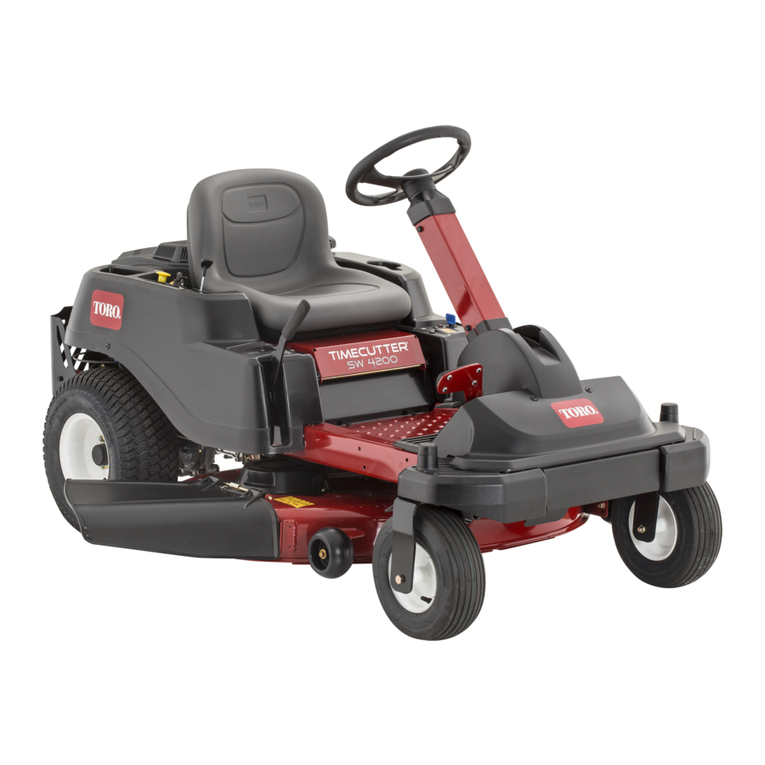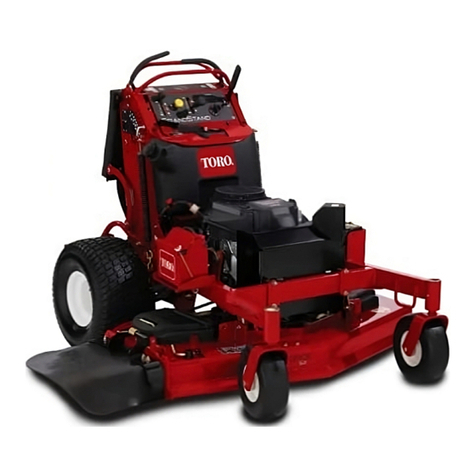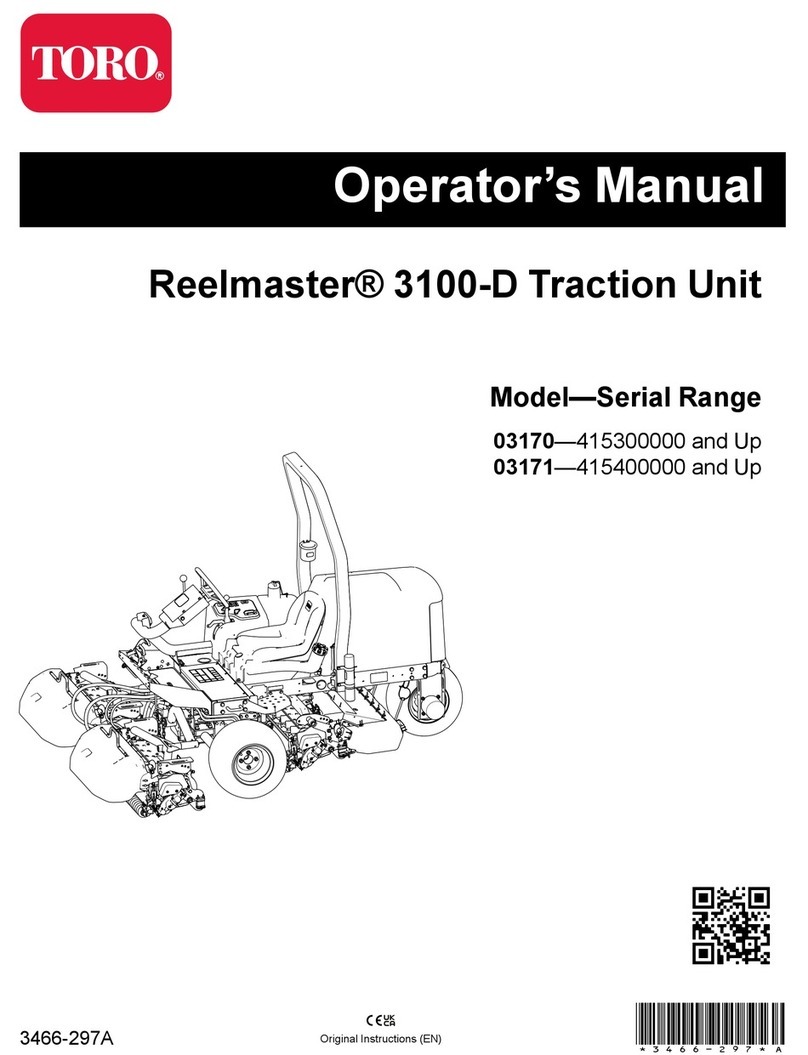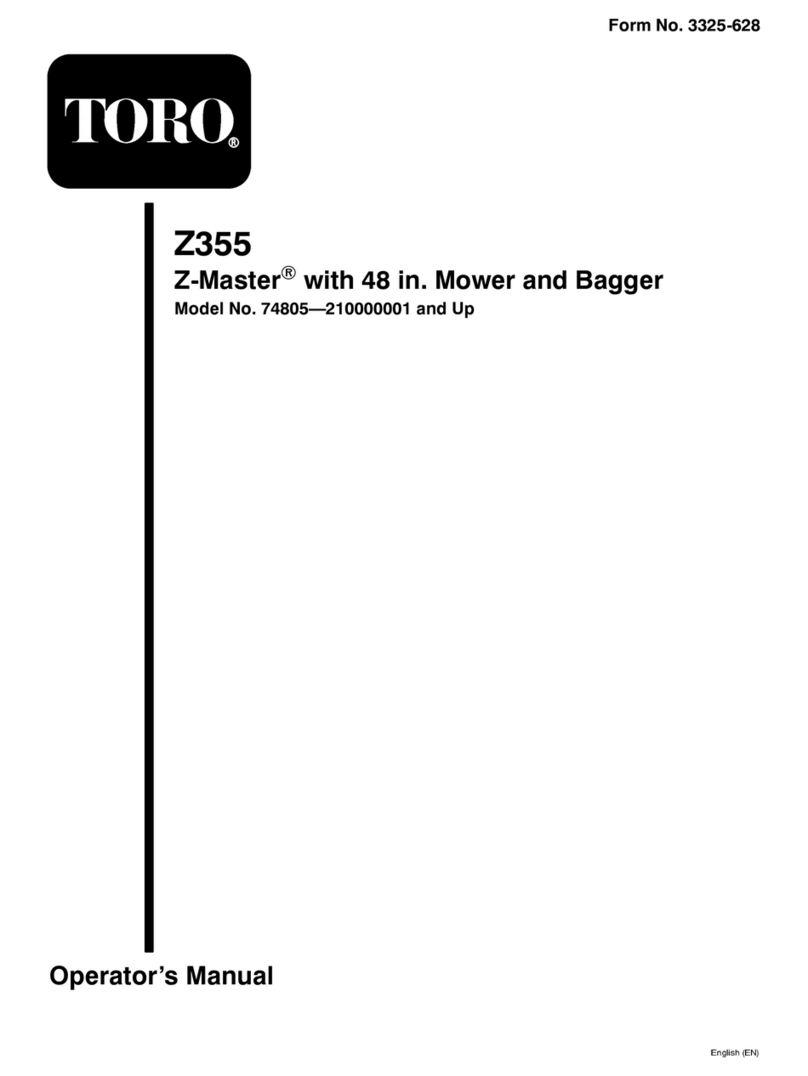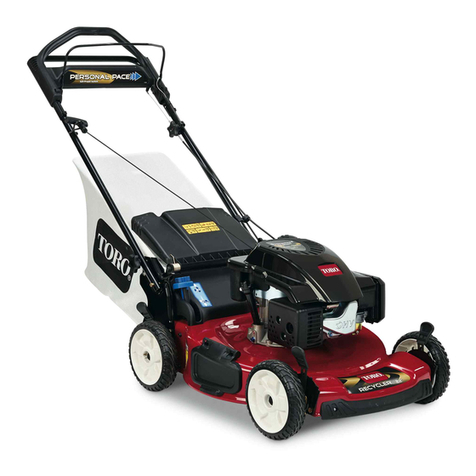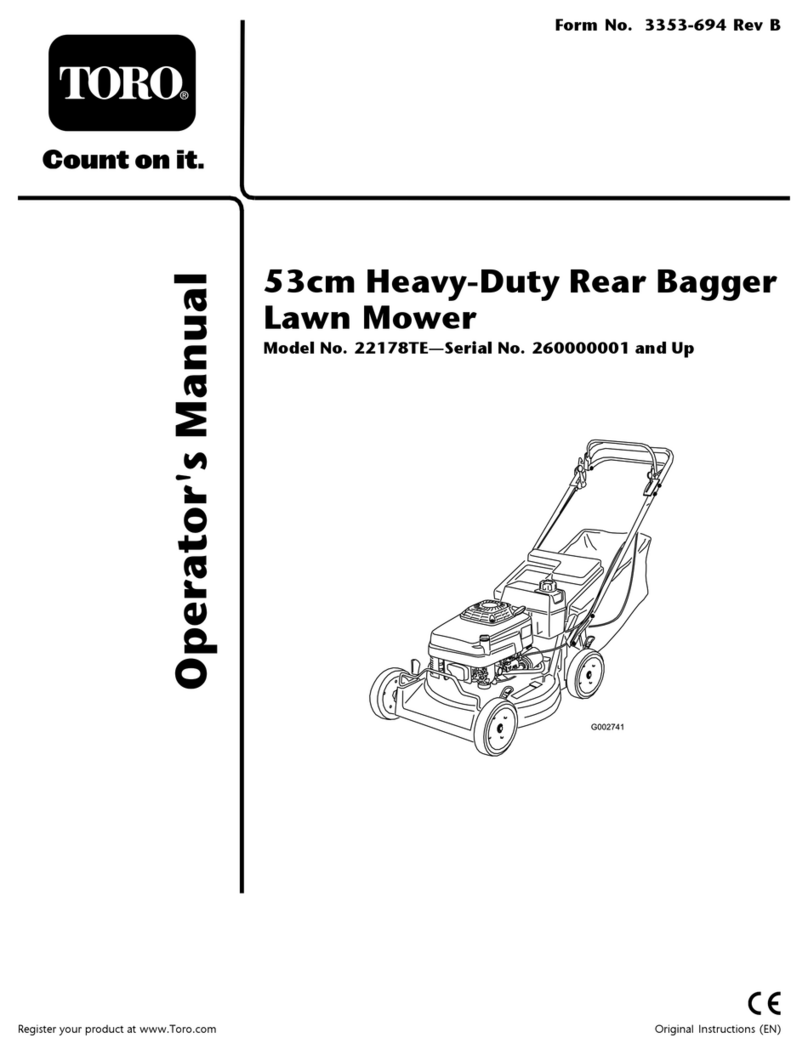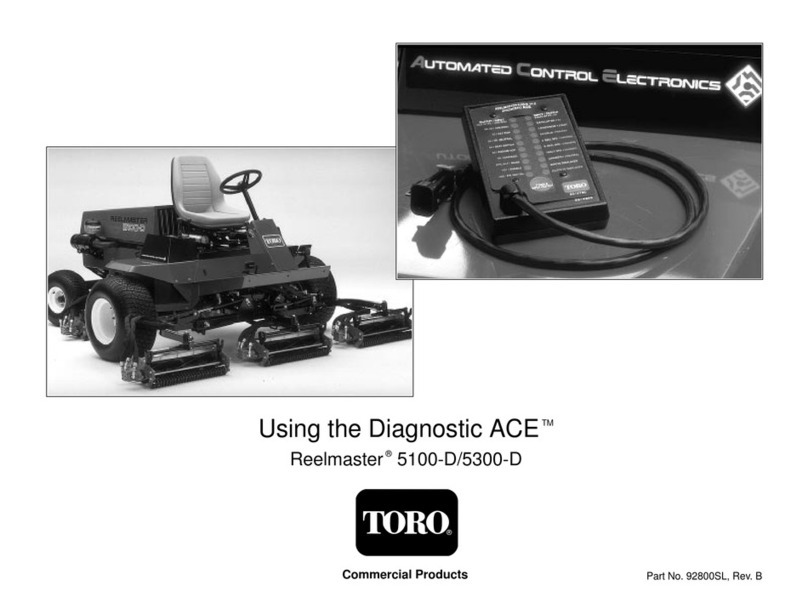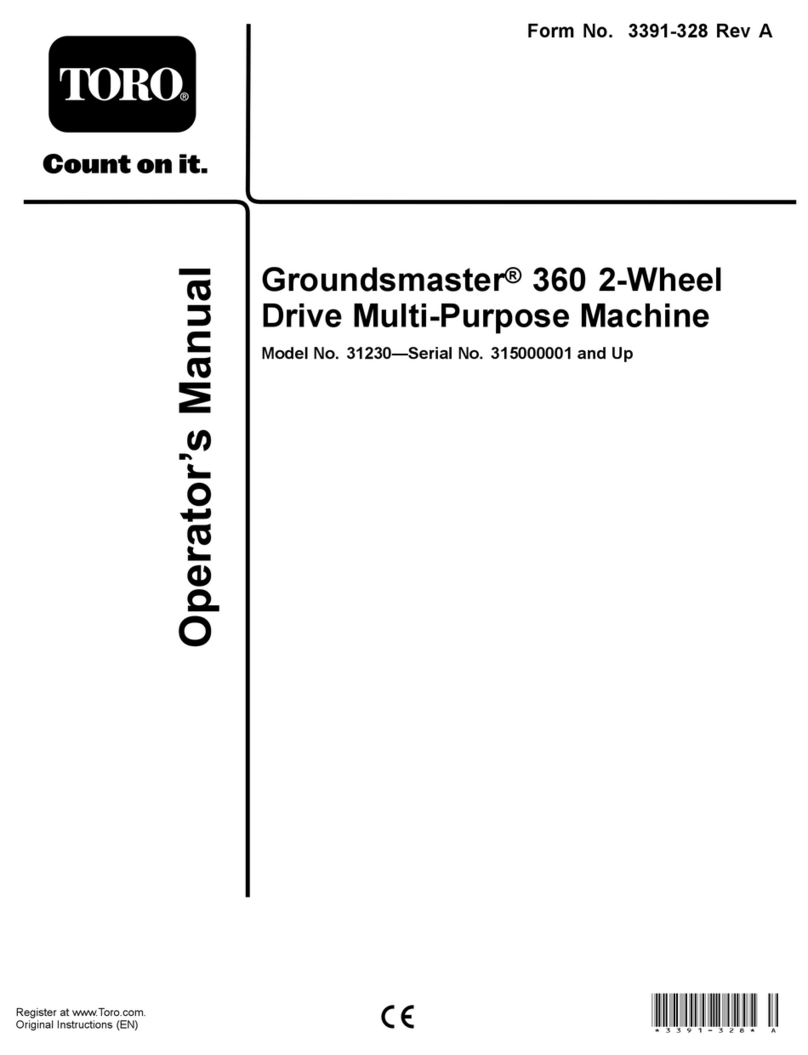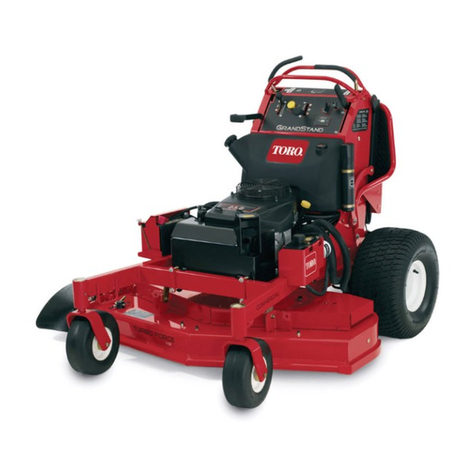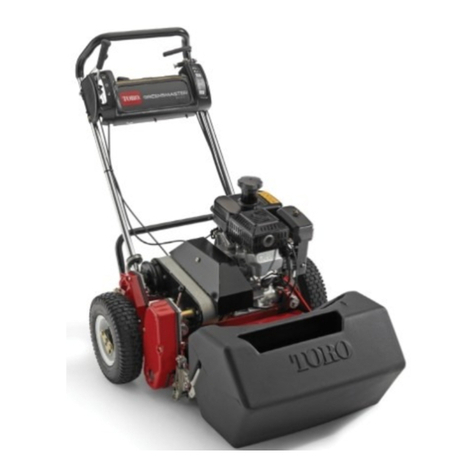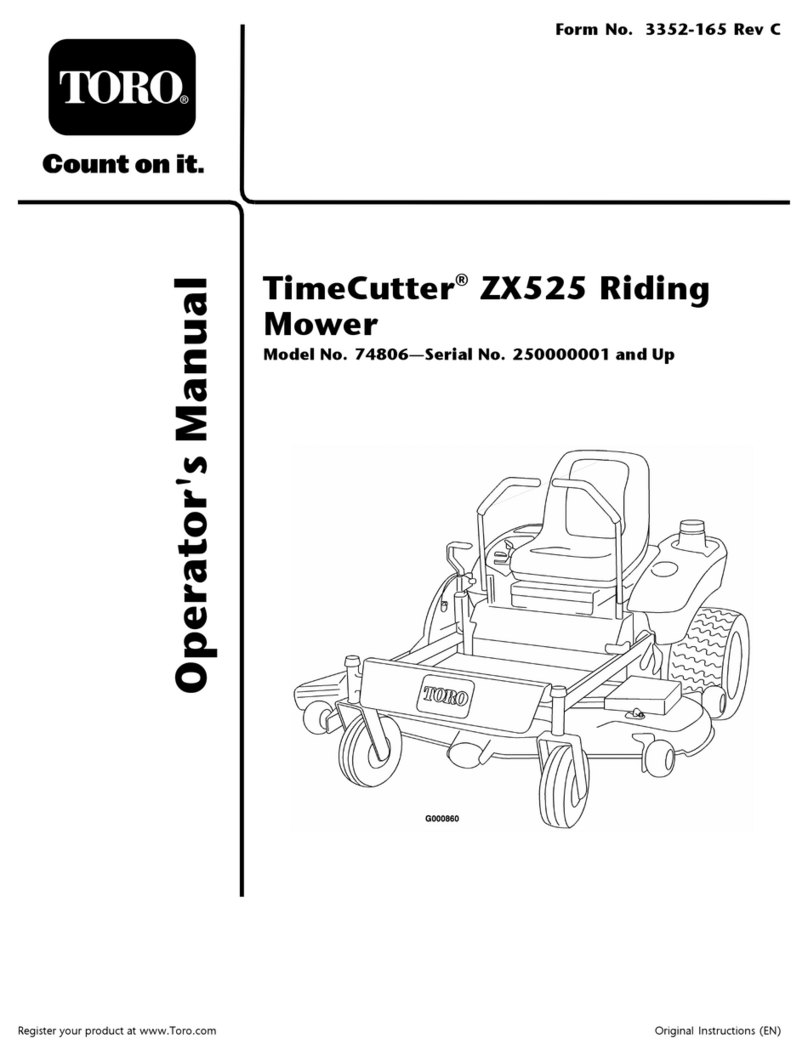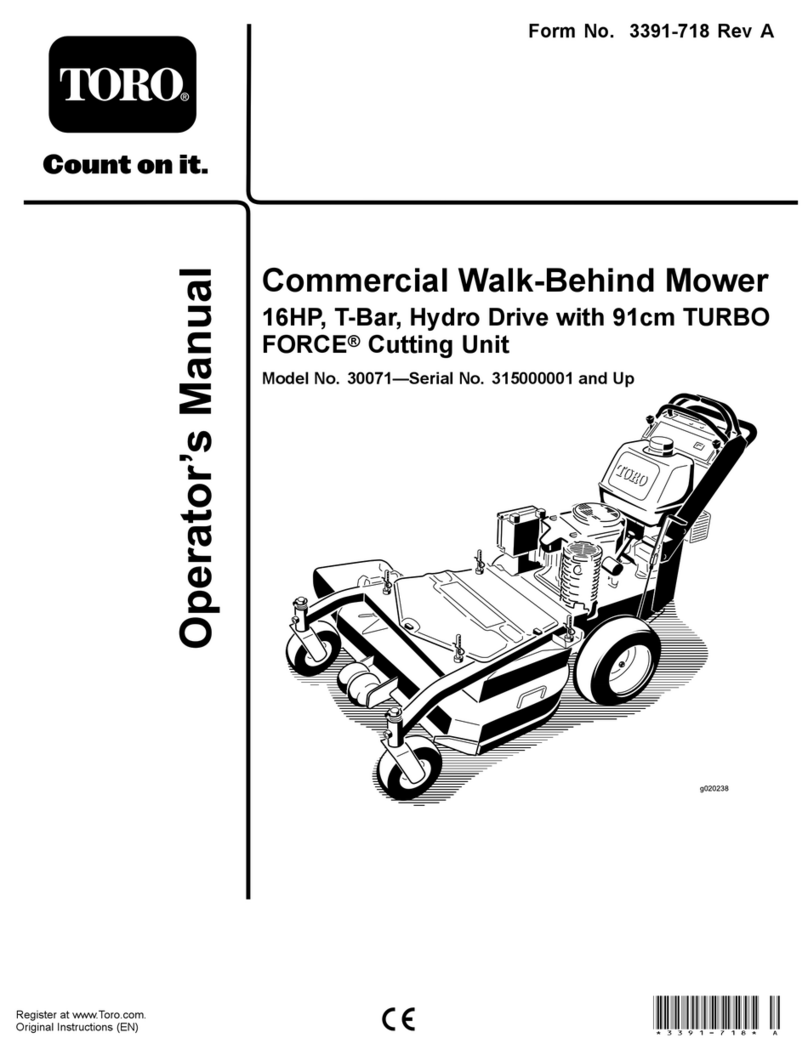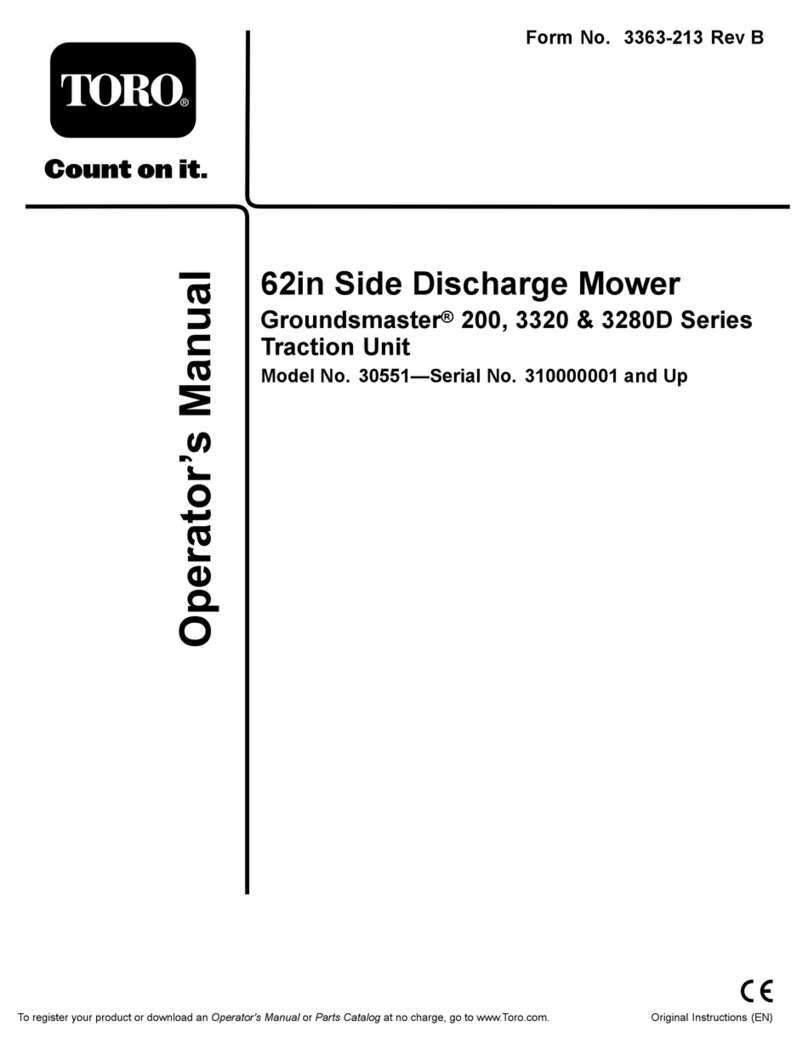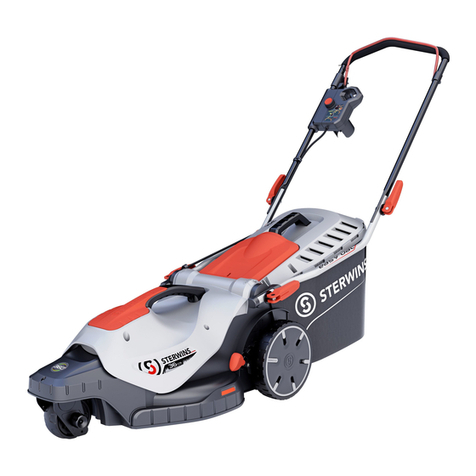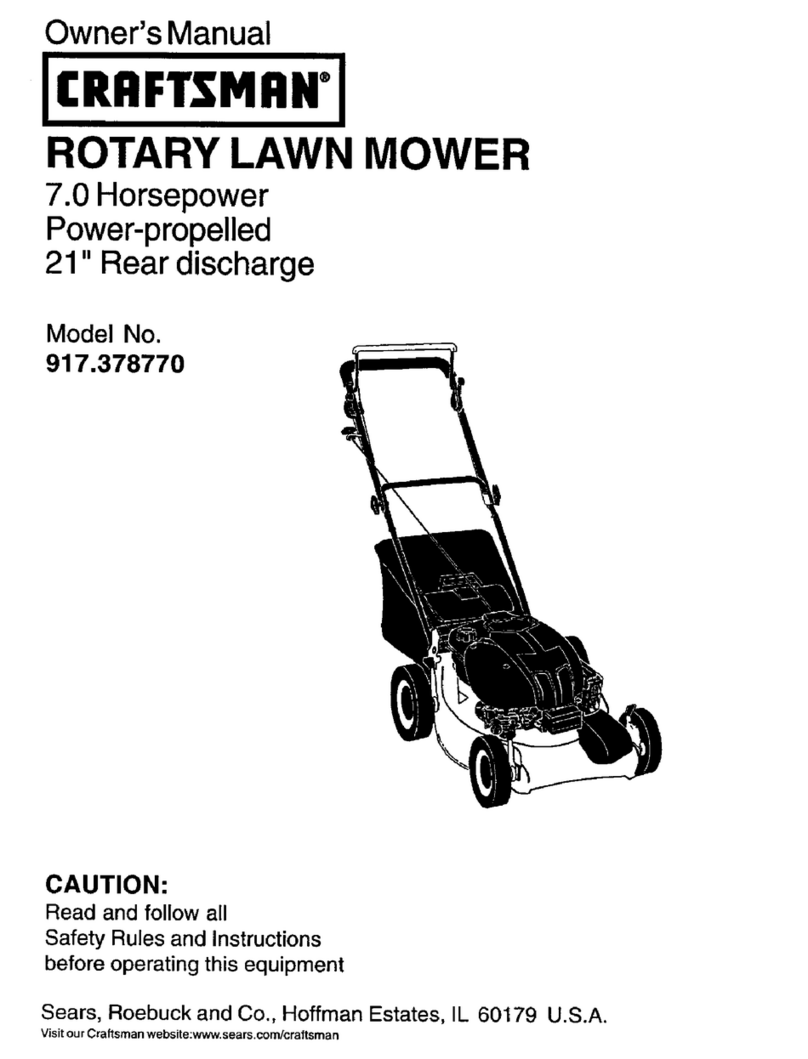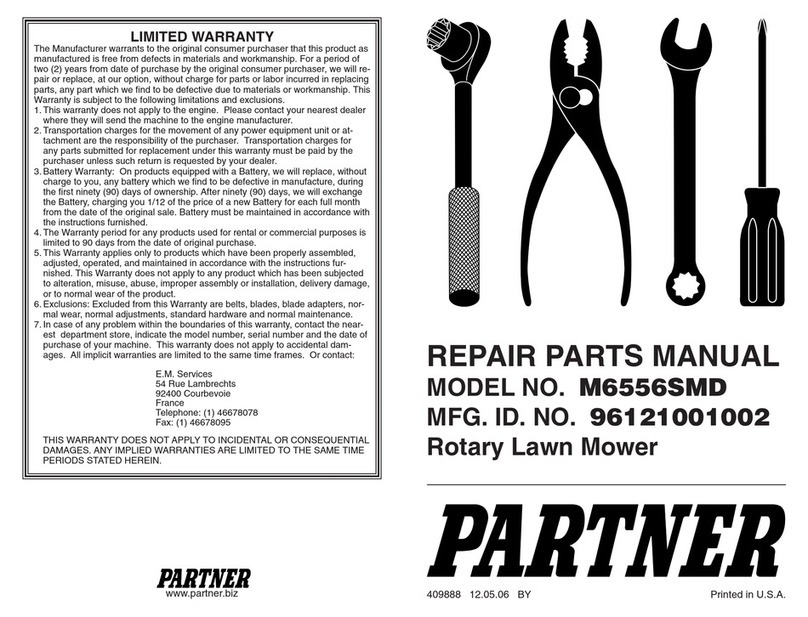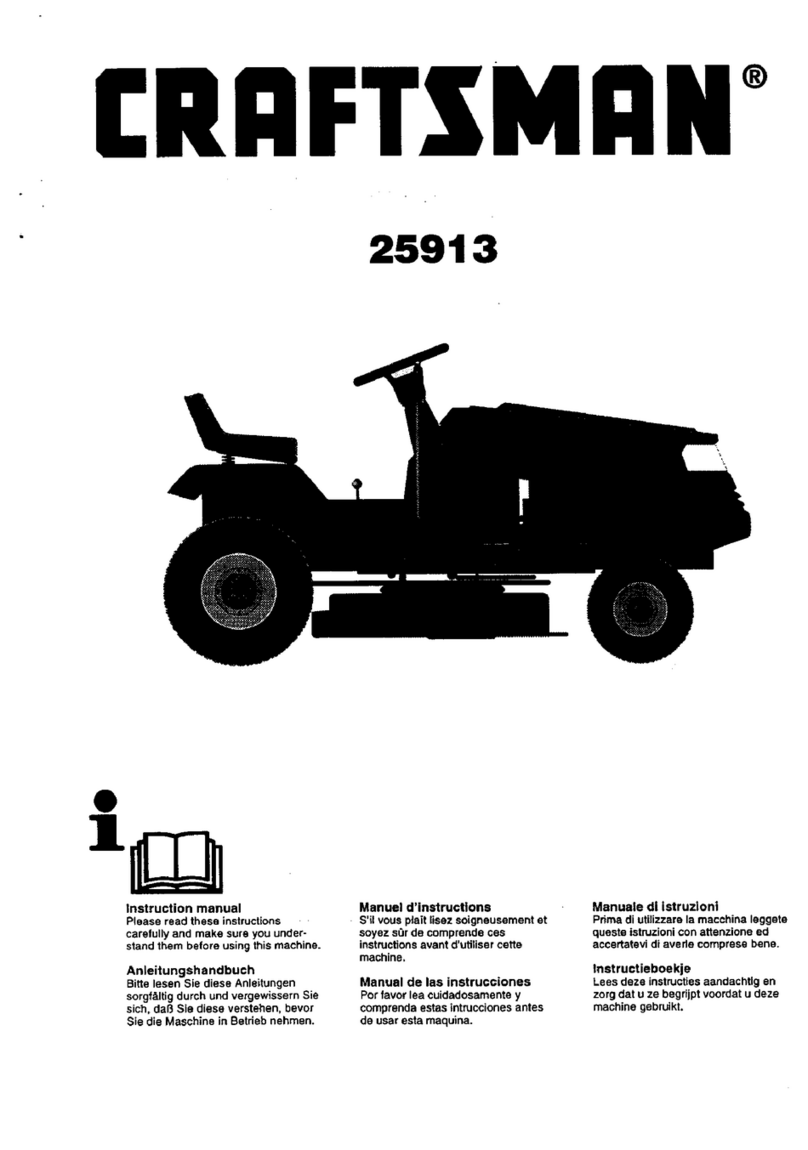Engine: Briggs & Stratton Vanguard, twin-cylinder, 4-
cycle, air-cooled, 11.9 kW @ 3600 rpm, 588 cc
displacement, governed speed of 3200 rpm. Mechanical
fuel pump, large-capacity dual element air cleaner. 2.5 l
oil capacity.
Fuel Capacity: 20 liter.
Traction Drive: Eaton model 11 hydrostatic transmission
integrally coupled to a Peerless model 1310 axle. Travel
speed range is 0–13.5 Km/h (0–8.5 mph) forward and
4.8 Km/h reverse (0–3 mph).
Controls: Foot-operated traction pedal. Hand-operated
throttle, choke, ignition switch, PTO switch, lift lever,
parking brake and seat adjustment.
Cutting Drive: Constant-tension belt drive system with
electric clutch utilizing a poly-V belt from the engine to
the jackshaft and BX section V-belt drive from the
jackshaft to each cutting unit.
Tires and Wheels: Two 23 x 8.5-12 front-drive turf tires
with 4-ply construction. Rear tires for the four-wheel
configuration, 16 x 6.5-6 turf tires with 4-ply
construction. Rear tire for the three-wheel configuration,
18 x 6.5-8 with 4-ply construction. 83–124 kPa inflation
pressure for all tires.
Electrical Features: 12-volt, 255 cold cranking amps at
180 C, 50-amp reserve capacity at 270 C. Battery, 16-
amp alternator, seat, traction, PTO and parking brake
interlock switches; electrical leads provided for optional
light and hour meter installations.
Steering: Pinion and gear sector with solid control link
to the rear steer assembly, 2.5 turns lock to lock.
Brakes: Service braking accomplished through
hydrostatic transmission. Parking brake controls
secondary shaft internal to the axle assembly and is
actuated by a control lever.
Main Frame: All-steel welded construction utilizing
tubular and formed sheet metal sections
Seat: Standard cushion seat and optional deluxe
suspension seat with arm rest and weight adjustment.
The seat is adjustable fore and aft. Arm rest kit also
available.
Lift System: Category “0” A-Frame mounting system
connected to the tractor via parallel linkage. One double-
acting 60 mm bore, 140-mm stroke hydraulic cylinder
receiving oil from hydrostatic transmission charge pump
via the control valve with float position. Maximum
operating pressure is 6895 kPa. When the traction unit is
equipped with cutting units, all three units are raised and
lowered via the single control lever. The lift system
works with the electric clutch to engage and disengage
the cutting units.
Overall Dimensions and Weight:
Wheel Tread Width 105.3 cm
Width across Front Tires 132 cm
Wheel Base 138.5 cm
Overall Length w/ Cutting Units Installed 229 cm
Overall Height 119 cm
Tractor Weight 50.4 kg
Weight with 5-Blade Fixed Cutting Units 440 kg
Weight with 8-Blade Floating Cutting Units 696 kg
Overall Width w/Fixed-Head Units 195 cm
Overall Width w/Floating Head Units 203 cm
Transport Width w/Fixed Head Units 140 cm
Transport Width w/Floating Head Units 200 cm
Optional Equipment:
Fixed Head Kit Model No. 02100
Floating Head Kit Model No. 02101
3-Wheel Axle Model No. 02200
4-Wheel Axle Model No. 02201
Full Roller Kit* Model No. 03440
Sectional Roller Kit* Model No. 03445
Wiehle Roller Kit* Model No. 03450
Skid Kit* Model No. 03446
Anti-Scalp Kit* Model No. 03447
Grass Basket Kit Model No. 02302
Power Take-off Kit Model No. 02301
Standard Seat Kit Model No. 30769
Deluxe Seat Kit Model No. 30772
Arm Rest Kit Model No. 30707
Roller Scraper Kit* Part No. 60-9560
Comb Kit* Part No. 67-9400
Rear Weight Part No. 24-5790
9
Specifications
